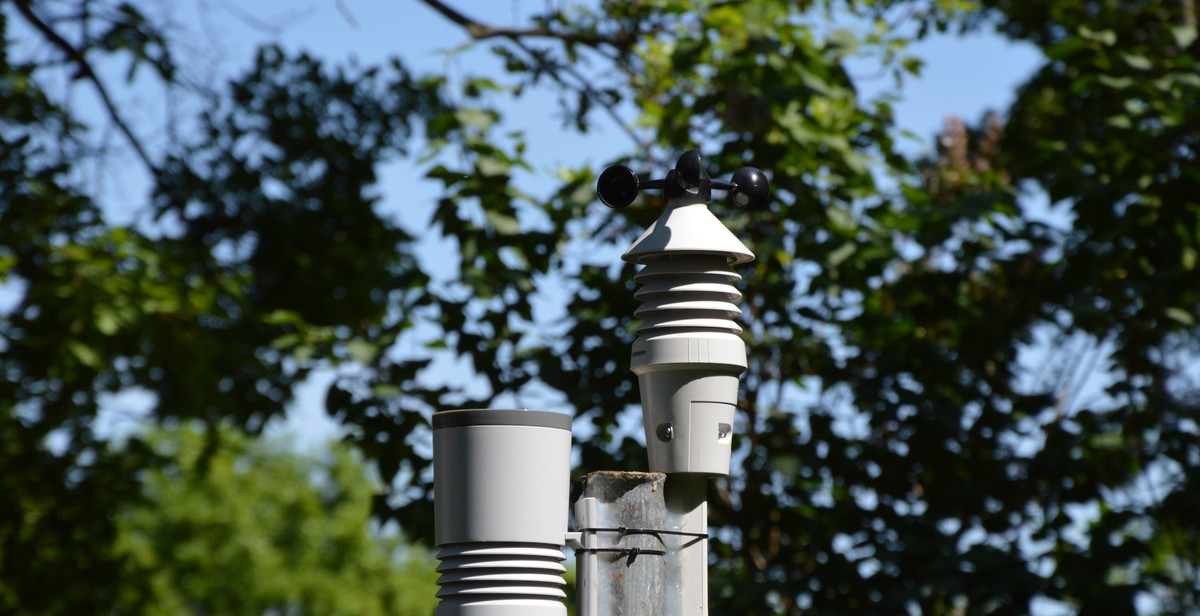How to Conduct a Vaccine Outreach Program: Strategies for Reaching Underserved Communities
The COVID-19 pandemic has highlighted the importance of equitable access to vaccines for all communities. However, underserved and marginalized communities often face barriers to accessing healthcare services, including vaccines. To address this issue, vaccine outreach programs have become a crucial tool for promoting vaccine uptake in underserved communities.
Conducting a successful vaccine outreach program requires careful planning and implementation. In this article, we will explore strategies for reaching underserved communities with vaccines, based on personal experience and best practices. We will discuss the importance of community engagement, cultural competence, and partnerships with local organizations. Additionally, we will provide tips for overcoming common challenges faced by vaccine outreach programs, such as vaccine hesitancy and logistical barriers.
Whether you are a healthcare provider, community organizer, or volunteer, this article will provide valuable insights and practical advice for conducting a vaccine outreach program that effectively reaches underserved communities.

Understanding Vaccine Hesitancy
Vaccine hesitancy is a term used to describe the reluctance or refusal to receive vaccines despite their availability. It is a complex issue that has gained attention in recent years due to the emergence of vaccine-preventable diseases and the global COVID-19 pandemic. Understanding vaccine hesitancy is crucial for conducting an effective vaccine outreach program.
Defining Vaccine Hesitancy
Vaccine hesitancy is not a new phenomenon, but it has become more prevalent in recent years. The World Health Organization (WHO) defines vaccine hesitancy as a delay in acceptance or refusal of vaccines despite their availability. It is influenced by factors such as complacency, convenience, confidence, and socio-economic factors.
Why Do People Hesitate?
People have different reasons for vaccine hesitancy. Some may have concerns about the safety and efficacy of vaccines, while others may have religious or philosophical objections. Misinformation and distrust of the healthcare system can also contribute to vaccine hesitancy. In some cases, vaccine hesitancy may be due to a lack of access to healthcare services or vaccines.
It is important to address these concerns and provide accurate information to individuals who are hesitant about vaccines. By doing so, we can increase vaccine acceptance and protect individuals and communities from vaccine-preventable diseases.

Identifying Underserved Communities
Identifying underserved communities is crucial to the success of any vaccine outreach program. These communities are often marginalized and face barriers to healthcare access, including language barriers, lack of transportation, and financial constraints. In order to effectively reach these communities, it is important to understand who they are and where they are located.
Defining Underserved Communities
Underserved communities are defined as populations that have limited access to healthcare services and resources. This can include low-income communities, rural areas, and communities of color. These communities often experience higher rates of vaccine-preventable illnesses due to a lack of access to healthcare and information about vaccinations.
Identifying Underserved Communities
There are several methods for identifying underserved communities. One approach is to look at demographic data, such as income levels, race, and geographic location. Census data and community health assessments can provide valuable information about where underserved communities are located.
Another approach is to work with community-based organizations and healthcare providers who serve these populations. These organizations have established relationships with community members and can provide valuable insights into the needs and challenges facing underserved communities.
It is also important to consider cultural factors when identifying underserved communities. Language barriers and cultural beliefs can impact healthcare access and utilization, so it is important to work with culturally competent organizations and providers who can effectively communicate with these communities.
By identifying underserved communities and understanding their unique needs and challenges, vaccine outreach programs can be tailored to effectively reach these populations and improve vaccination rates.

Designing a Vaccine Outreach Program
Setting goals and objectives, developing a strategy, and creating a budget are the three key components of designing a successful vaccine outreach program.
Setting Goals and Objectives
The first step in designing a vaccine outreach program is to identify the target audience and set specific goals and objectives. Goals should be specific, measurable, achievable, relevant, and time-bound (SMART). For example, the goal of the outreach program could be to vaccinate 80% of eligible individuals in a specific community within six months. Objectives should be aligned with the goal and should be more specific. For instance, objectives could include increasing vaccine awareness, reducing vaccine hesitancy, and providing easy access to vaccines.
Developing a Strategy
The next step is to develop a strategy to achieve the goals and objectives of the outreach program. The strategy should include a clear plan of action, timelines, and responsibilities. It should also identify the communication channels, such as social media, email, or flyers, that will be used to reach the target audience. The strategy should also take into account any potential barriers to vaccine uptake, such as language or cultural differences, and address them accordingly.
Creating a Budget
The final step is to create a budget for the outreach program. The budget should include all the necessary costs, such as staff, materials, and advertising. It should also take into account any potential funding sources, such as grants or donations. Creating a budget will help ensure that the outreach program is financially feasible and sustainable.

Collaborating with Community Leaders and Influencers
Identifying key stakeholders is crucial when conducting a vaccine outreach program. Community leaders and influencers are among the most important stakeholders to engage with. They have a strong influence on their respective communities and can help to spread accurate information about the vaccine and the program.
Building Relationships
Building relationships with community leaders and influencers is a key step in collaborating with them. It is important to understand their concerns and perspectives, and to work together to address any issues that may arise. This can be achieved through regular communication and engagement, such as attending community events or hosting meetings with key stakeholders.
Creating a Communication Plan
Creating a communication plan is essential when collaborating with community leaders and influencers. This plan should include clear and concise messaging about the vaccine and the outreach program, as well as the roles and responsibilities of each stakeholder. The plan should also outline how communication will be conducted, such as through social media, email, or in-person meetings.
| Key Steps | Description |
|---|---|
| Identify key stakeholders | Identify community leaders and influencers who can help to promote the vaccine outreach program. |
| Build relationships | Engage with community leaders and influencers to understand their concerns and perspectives. |
| Create a communication plan | Develop a clear and concise plan for communicating with community leaders and influencers about the vaccine outreach program. |
- Regularly engage with community leaders and influencers to maintain relationships and address any concerns.
- Provide regular updates on the progress of the vaccine outreach program.
- Recognize and acknowledge the contributions of community leaders and influencers in promoting the program.

Reaching Underserved Communities
Conducting a vaccine outreach program requires a deep understanding of cultural competence, tailoring outreach strategies, and providing access and resources to underserved communities. Here are some strategies to consider:
Understanding Cultural Competence
Cultural competence is understanding and respecting the cultural differences between communities. It involves learning about the community’s beliefs, values, and practices to provide effective outreach. When conducting vaccine outreach programs, it’s essential to consider cultural competence to build trust with the community.
Tailoring Outreach Strategies
Tailoring outreach strategies to the specific needs of the community is crucial to ensure that the message is received and understood. Outreach strategies can include community events, social media campaigns, and partnerships with local organizations. These strategies should be tailored to the community’s language, cultural values, and beliefs.
Providing Access and Resources
Providing access and resources to underserved communities is essential to ensure that everyone has an equal opportunity to receive the vaccine. This can include providing transportation, offering vaccines at convenient locations, and providing educational resources in multiple languages.
- Offer vaccines at community centers, places of worship, and other accessible locations
- Partner with local organizations to provide resources and information about vaccines
- Provide educational resources in multiple languages
- Offer transportation services to vaccine sites
By understanding cultural competence, tailoring outreach strategies, and providing access and resources to underserved communities, vaccine outreach programs can successfully reach and vaccinate those who may have otherwise been left behind.

Measuring Success
Tracking metrics and evaluating impact are crucial components of any vaccine outreach program. By monitoring and analyzing key performance indicators, you can determine the effectiveness of your strategies and make necessary adjustments to ensure success.
Tracking Metrics
One important metric to track is the number of individuals reached by your outreach efforts. This can include the number of flyers distributed, emails sent, or social media posts shared. Additionally, tracking the number of individuals who schedule appointments or attend vaccination clinics can provide insight into the effectiveness of your messaging and outreach efforts.
You should also track the demographics of individuals reached and vaccinated. This can help identify any gaps in outreach to specific communities and allow for targeted efforts to reach underserved populations.
Evaluating Impact
Measuring the impact of your vaccine outreach program is critical to understanding its overall success. Tracking the number of vaccinations administered and the percentage of individuals who return for their second dose can provide valuable insights into the effectiveness of your program.
Additionally, conducting surveys or focus groups with participants can provide valuable feedback on the effectiveness of your messaging and outreach strategies, as well as identify areas for improvement.
| Metric | Description |
|---|---|
| Number of individuals reached | Number of individuals who received information about the vaccine through outreach efforts |
| Number of appointments scheduled | Number of individuals who scheduled a vaccine appointment as a result of outreach efforts |
| Number of vaccinations administered | Number of individuals who received at least one dose of the vaccine through the outreach program |
| Percentage of individuals who return for second dose | Percentage of individuals who received a first dose and returned for their second dose |

Conclusion
Conducting a vaccine outreach program is crucial in ensuring that everyone has access to life-saving vaccines, especially those in underserved communities. Implementing the right strategies can make a significant difference in increasing vaccine uptake and reducing vaccine hesitancy.
Key Takeaways
- Understand the unique needs and challenges of the community you are targeting.
- Partner with trusted community leaders and organizations to build trust and increase engagement.
- Use culturally appropriate messaging and materials to effectively communicate the importance of vaccines.
- Provide convenient and accessible vaccination locations and services.
- Track and measure the success of your outreach program to continuously improve and adapt your strategies.
Final Thoughts
As a professional article writer and content creator with years of experience, I understand the importance of effective communication and outreach strategies. By following the tips and strategies outlined in this article, you can make a significant impact in increasing vaccine uptake and ensuring that everyone has access to life-saving vaccines. Let’s work together to build healthier and more resilient communities.
